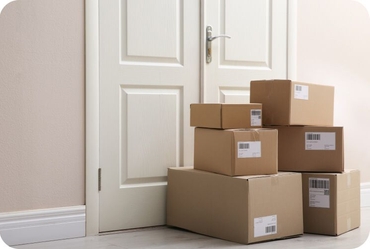
What Are Common Challenges in International Shipping and How to Overcome Them?
International shipping can open doors to a world of products, but it comes with its fair share of challenges. From customs regulations to unexpected delays, navigating these obstacles requires preparation and knowledge. This guide explores the most common challenges global shoppers face and offers practical solutions to ensure a smooth shipping experience.
1. Dealing with Customs Regulations
Customs clearance is one of the most frequent hurdles in international shipping. Common issues include:
- Incomplete Documentation: Missing or incorrect paperwork can lead to delays.
- Duties and Taxes: Unexpected fees at customs can increase the total cost of your purchase.
- Prohibited Items: Some products may be restricted or require special permits.
How to Overcome It:
- Research customs regulations for your country before making a purchase.
- Ensure all documentation, such as invoices and declarations, is accurate and complete.
- Use package forwarding services like Boxit4me, which assist with customs clearance and provide guidance on prohibited items.
2. Managing Shipping Costs
Shipping internationally can be expensive, especially when purchasing from multiple retailers. Factors like weight, dimensions, and destination significantly impact costs.
How to Overcome It:
- Consolidate multiple purchases into one shipment to reduce costs.
- Use a shipping calculator to compare carriers and find the most cost-effective option.
- Take advantage of free shipping offers or discounts available through retailers or forwarding services.
3. Tracking and Monitoring Shipments
Losing track of your package during transit can be stressful. Limited tracking updates or unresponsive carriers exacerbate the problem.
How to Overcome It:
- Choose reputable carriers like DHL, FedEx, or UPS that offer robust tracking tools.
- Opt for services that provide real-time notifications and updates.
- Consolidate shipments through a forwarding service to simplify tracking multiple packages.
4. Delays Due to Peak Seasons
High-demand periods, such as holidays or sales events, often lead to longer shipping times. Carriers may also face logistical bottlenecks.
How to Overcome It:
- Shop early to avoid last-minute rushes during peak seasons.
- Upgrade to express shipping for time-sensitive orders.
- Monitor carrier advisories about expected delays and plan accordingly.
5. Addressing Damage or Loss During Transit
Packages can sometimes get damaged or lost in transit, especially for fragile or valuable items.
How to Overcome It:
- Opt for insurance to protect your shipment against damage or loss.
- Use services that offer secure packaging and allow you to add "Fragile" labels.
- Report issues promptly to the carrier or forwarding service to resolve claims efficiently.
6. Understanding Return Policies
Returning items internationally can be a complex and costly process, especially if retailers have unclear policies.
How to Overcome It:
- Check the retailer’s return policy before purchasing.
- Use a forwarding service to consolidate returns and reduce costs.
- Keep original packaging and documentation to simplify the return process.
7. Managing Unexpected Fees
Hidden costs like currency conversion fees, handling charges, or storage fees can catch shoppers off guard.
How to Overcome It:
- Calculate total costs, including all potential fees, before completing your purchase.
- Use services that are transparent about pricing and provide upfront cost estimates.
- Avoid storing packages at warehouses for extended periods to minimize storage charges.
8. Handling Language Barriers
Shopping from foreign retailers can sometimes lead to miscommunication due to language differences.
How to Overcome It:
- Use translation tools to understand product descriptions and policies.
- Choose retailers that offer multilingual customer support.
- Leverage package forwarding services with local expertise to bridge communication gaps.
9. Ensuring Sustainable Shipping Practices
Many shoppers are concerned about the environmental impact of international shipping.
How to Overcome It:
- Consolidate packages to reduce packaging waste and carbon emissions.
- Choose carriers or services that prioritize eco-friendly practices.
- Opt for slower shipping methods when time is not critical to minimize the environmental footprint.
Conclusion
Although international shipping has difficulties, these are not insurmount ones. Understanding possible challenges and applying these ideas would help global consumers to have a hassle-free experience. Being proactive guarantees better delivery and more piece of mind from handling customs laws to properly tracking goods. Services like Boxit4me give the skills required to confidently conquer these obstacles and simplify their navigation.
- 1. Dealing with Customs Regulations
- 2. Managing Shipping Costs
- 3. Tracking and Monitoring Shipments
- 4. Delays Due to Peak Seasons
- 5. Addressing Damage or Loss During Transit
- 6. Understanding Return Policies
- 7. Managing Unexpected Fees
- 8. Handling Language Barriers
- 9. Ensuring Sustainable Shipping Practices
- 10. Conclusion
Related Articles

What are the Best Practices for Streamlining International Shipping for Online Shoppers?

What Are the Key Benefits of Bulk Order Management for Shoppers?
